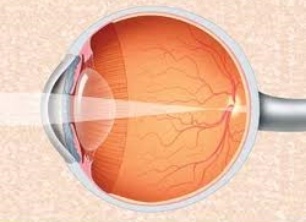
 Nearsightedness is caused by an eye whose shape doesn't focus on distant objects. In other word, children with nearsightedness can only see things that are close but has trouble seeing distant objects clearly. Generally, nearsightedness first occurs in school-age children. Because the eye continues to grow during childhood, it typically progresses until about age. Yet, the numbers of children having nearsightedness are reaching epidemic proportions, especially in Asia, due to urbanization and increased screen and text-based activity while children spend more time on computers, watching television, or reading book, but less time outdoors than they once did. However, earlier nearsightedness will be more likely expose children to the risk of a variety of blinding eye diseases, including perforation or detached retina, macular weak and bleeding, cataract and glaucoma.
Nearsightedness is caused by an eye whose shape doesn't focus on distant objects. In other word, children with nearsightedness can only see things that are close but has trouble seeing distant objects clearly. Generally, nearsightedness first occurs in school-age children. Because the eye continues to grow during childhood, it typically progresses until about age. Yet, the numbers of children having nearsightedness are reaching epidemic proportions, especially in Asia, due to urbanization and increased screen and text-based activity while children spend more time on computers, watching television, or reading book, but less time outdoors than they once did. However, earlier nearsightedness will be more likely expose children to the risk of a variety of blinding eye diseases, including perforation or detached retina, macular weak and bleeding, cataract and glaucoma.

- Persistently squint
- Need to sit very close to the television, movie screen or blackboard
- Hold books very close while reading
- Seem to be unaware of distant objects
- Blink excessively
- Rub his or her eyes frequently

- Family history of nearsightedness
- Focusing on close-up objects such as a book or a computer for long periods of time
- Using dim light
- Nutritional deficiencies
- Less exposure to the sun
- Doing excessive amounts of near work
- Low levels of calcium, fluoride and selenium


|

|






























